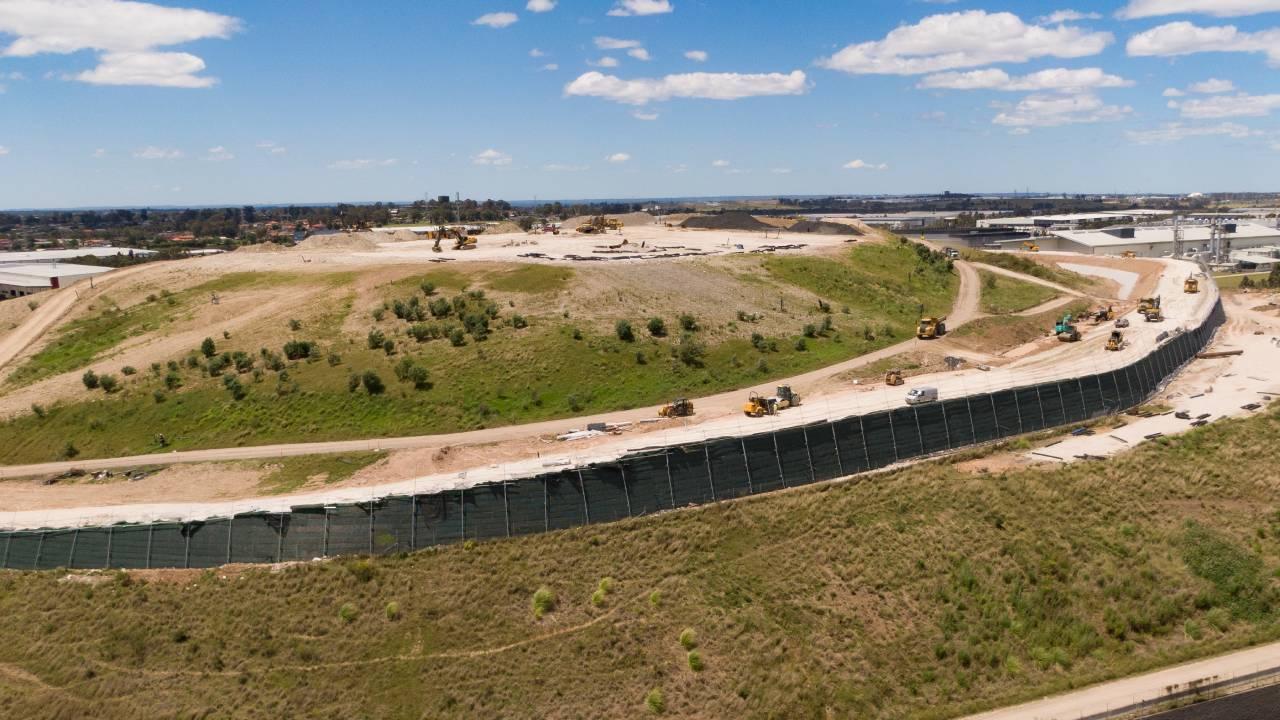Global Synthetics5 mins Read
Casestudy: An Innovative Landfill Live Expansion – The Great Wall of Sydney: Erskine Park’s Landfill MSE Wall
The Cleanaway Erskine Park Landfill plays a crucial role in ensuring responsible waste management for the local community in Sydney and the western suburbs. By adhering to the highest standards, it provides a safe and regulated environment for disposing of general waste and low-level contaminated soils from construction businesses.
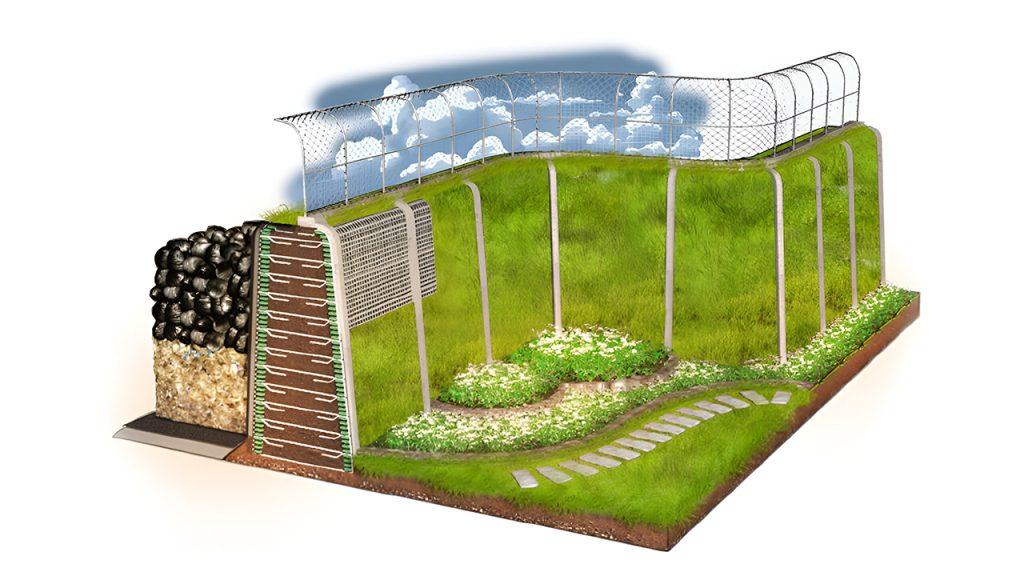
Erskine Park’s Landfill MSE Wall
Landfill Live Expansion
Application: Landfill Berm/MSE Wall Product used: Terralink®, AceGrid® uniaxial Geogrid, Pyramat® 75 HPTRM, Secugrid® biaxial geogrid
What is Landfill Live Expansion?
Landfill expansion methods include piggy-backing and live expansion. Piggy-backing builds a new landfill above an existing one, while live expansion increases capacity while the landfill operates. Using geogrid-reinforced MSE walls/berms is a cost-effective way to expand, optimizing space without requiring more land.
Challenges and Innovations at Cleanaway's Erskine Park Landfill
Cleanaway's Erskine Park Landfill was projected to reach its airspace capacity by late 2020, with no alternative landfill assets accessible in the NSW portfolio. Horizontal expansion was unfeasible, and traditional vertical expansion techniques had been exhausted. Located within the bounds of an excavated volcanic diatreme in Western Sydney, property limits restricted lateral expansion. The landfill necessitated a design life of 100 years. Thus, a method enabling capacity increase and operational life extension without closure, termed live expansion, was imperative.
The Solution
Following an optioneering assessment phase by WSP, the Terralink® MSE wall system comprising a geogrid retaining wall with steel mesh facing was assessed to be feasible and economically viable to increase available airspace for waste placement. The Terralink® MSE wall system comprises a geogrid retaining wall with steel mesh facing. This method, which is distinct from piggybacking, involves the construction of a geogrid reinforced mechanically stabilised earth wall or berm (MSE wall/berm), facilitating the expansion process during active landfill operations. The technique not only saves space but is also economically advantageous.
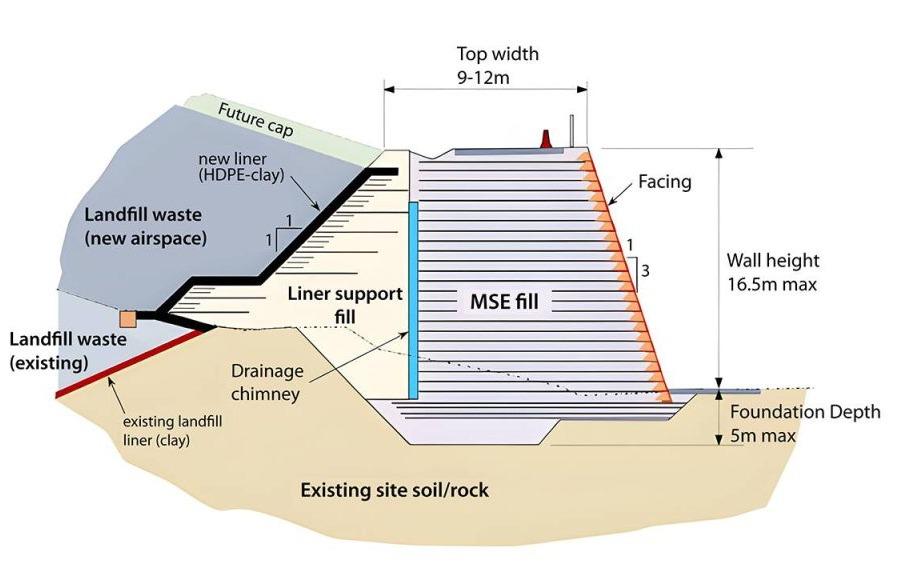
The MSE wall system was designed by WSP. Key design considerations for the MSE retaining wall included serviceability, settlement, design life and durability from exposure to adverse environments, foundation requirements, backfill quality requirements and construction costs.
Other considerations during the design included the durability of the structure and the visual appearance, given the scale of the structure. Pyramat ®75 High Performance TRM (HPTRM) with 100 years design life was used within the MSE wall at the facing behind the mesh, for additional long term durability requirements as well as provide a green surface and appearance.
To account for foundation variability, the wall was designed to accommodate the compression and consolidation of the founding materials to ensure it functioned effectively supporting the landfill lining system and maintained its structural integrity. AceGrid® geogrid and Secugrid® biaxial geogrid were also used to stabilise the soil in some parts of the foundation.
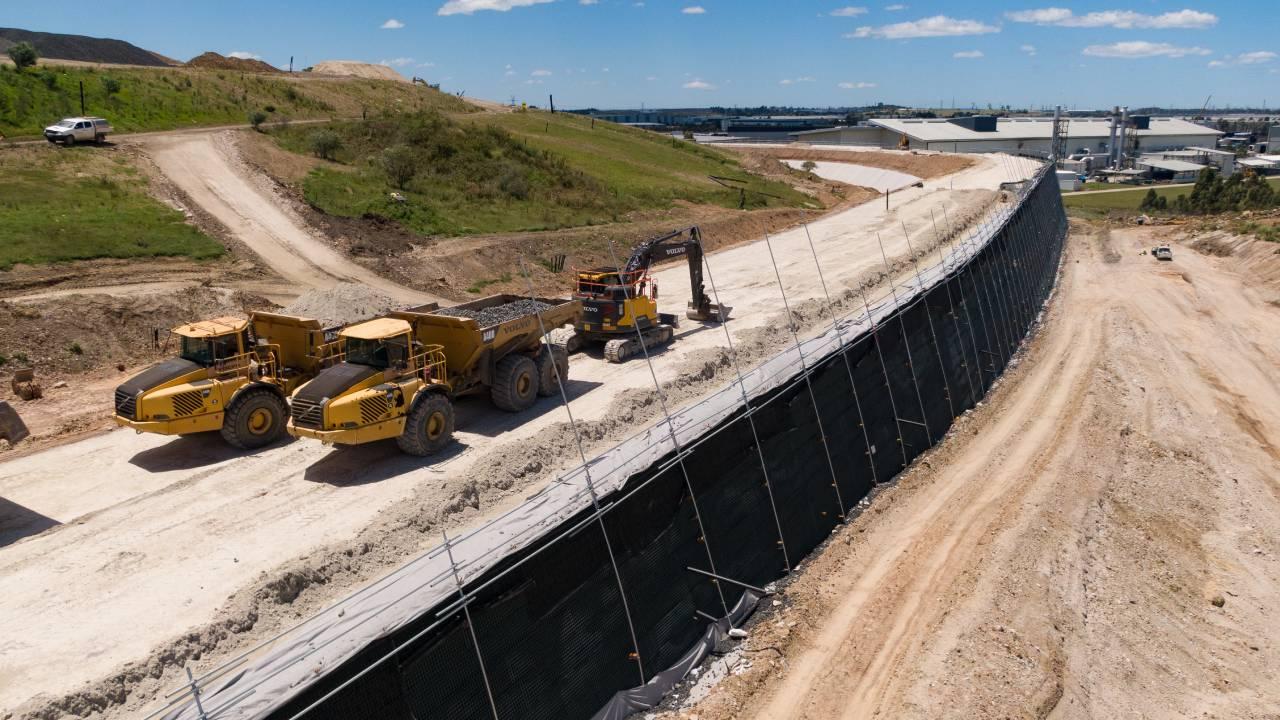
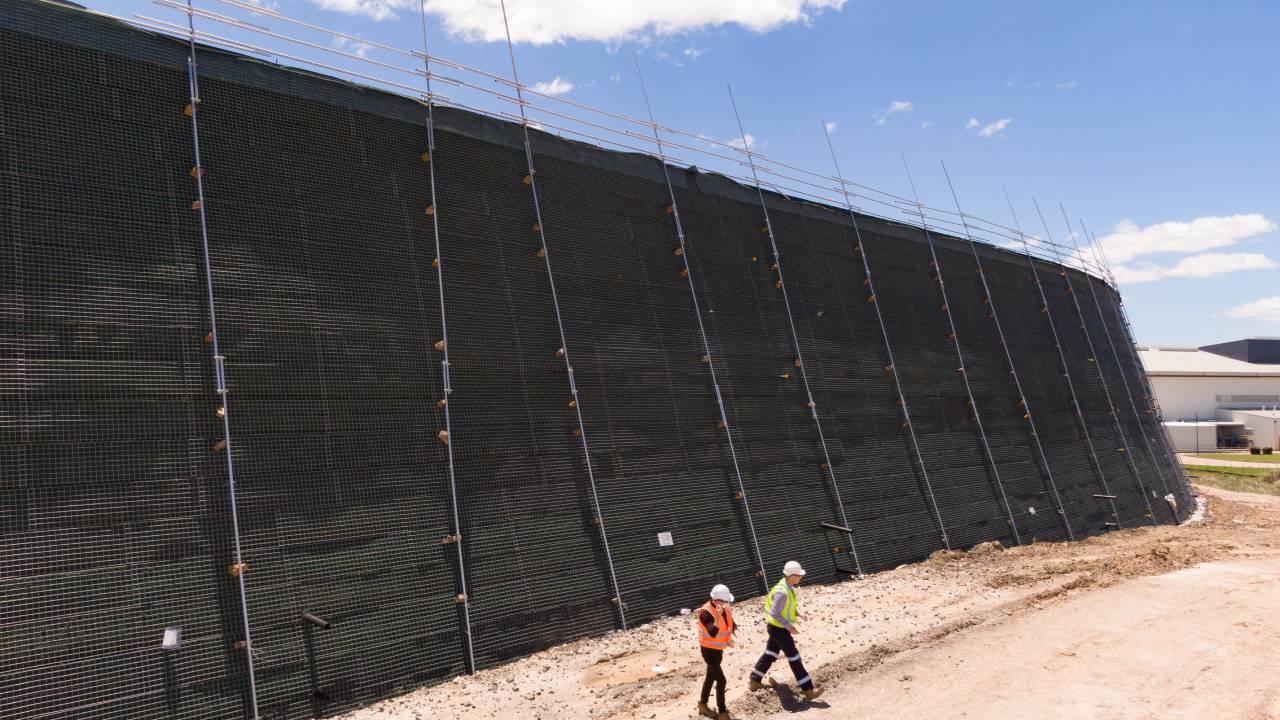
The Cleanaway’s Erskine Park Landfill in NSW, recognised as the “Great Wall of Sydney“, showcases a pioneering approach to landfill expansion known as live expansion. This technology and approach were in line with Cleanaway’s Blueprint 2030 strategy, Blueprint 4 – Landfill Optimisation, which focuses on investing in new capacity to ensure that there is sufficient airspace at our existing landfill operations.
Global Synthetic’s technical and sales team were involved in this project from early stages including the feasibility study all the way to the construction and CQC technical support.
Features and Benefits
Erskine Park Landfill’s live expansion, the first of its kind in Australia, features the country’s largest landfill application of MSE technology—900 meters in length and over 16.5 meters high. The project, engineered by WSP and executed by Global Synthetics, has set a new standard in landfill engineering.
The MSE wall technology unlocked 430,000 cubic metres of airspace that was previously not available. This extends the operational life of Erskine Park Landfill by over three years and alleviates some of the pressure on Sydney’s landfill network.
“We have set a precedent for the Australian landfill industry. In a climate where fewer and fewer landfills are being approved, this technology opens up the opportunity to revitalise dormant assets or extend the life of assets heading towards closure.” says Cleanaway Landfill Manager Daniel Wright.
